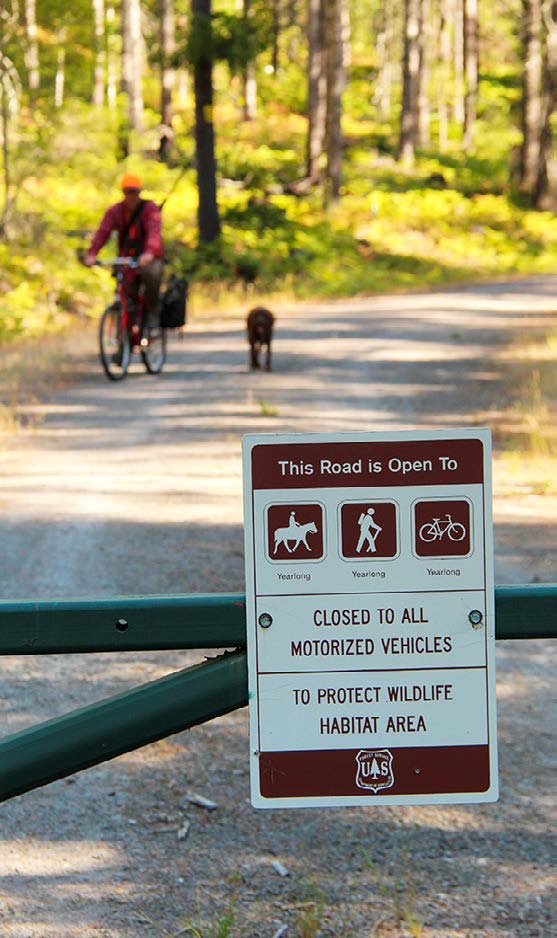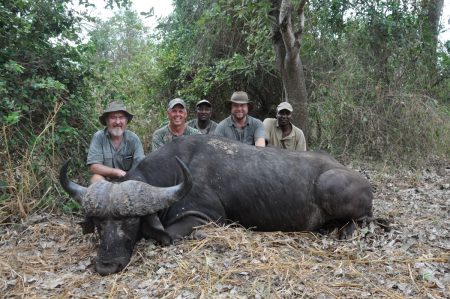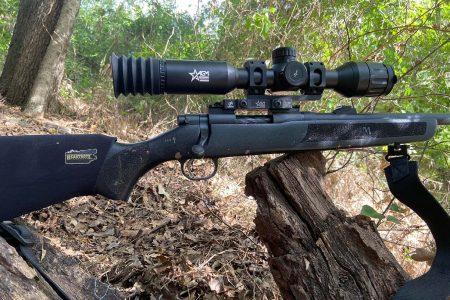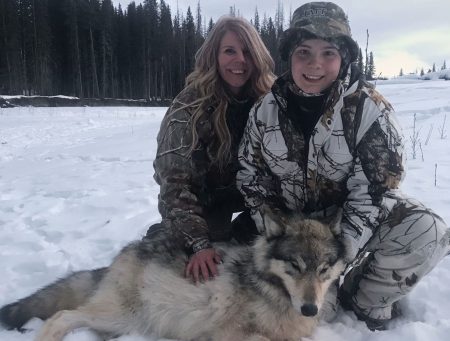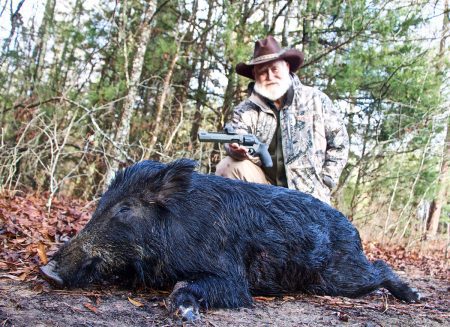DO YOUR HOMEWORK
No matter where you choose to embark upon a do- it-yourself upland bird hunt, do the research before leaving home. As I write these words, we’re entering wildfire season, and over the past two summers, much of the western Cascade Range and even the Coast Range have succumbed to massive burns. After a year or two, these burns become prime quail habitat. If looking to drive out, check to see that no wildfires are burning in the places you want to hunt.
Oregon’s Southwest Coast, from Coos Bay to the California border, has been solid for years, and there are good public lands to hunt near Central Point, Roseburg and around Mount Hood. Before packing your bags, however, call regional fish and wildlife offices in the state and regions you’d like to hunt. Seek out the latest information on bird trends, wildfire and land-access information. These elements can change from season to season, and even day to day in the early weeks of hunting season. So, stay flexible, as there will always be a place to hunt.
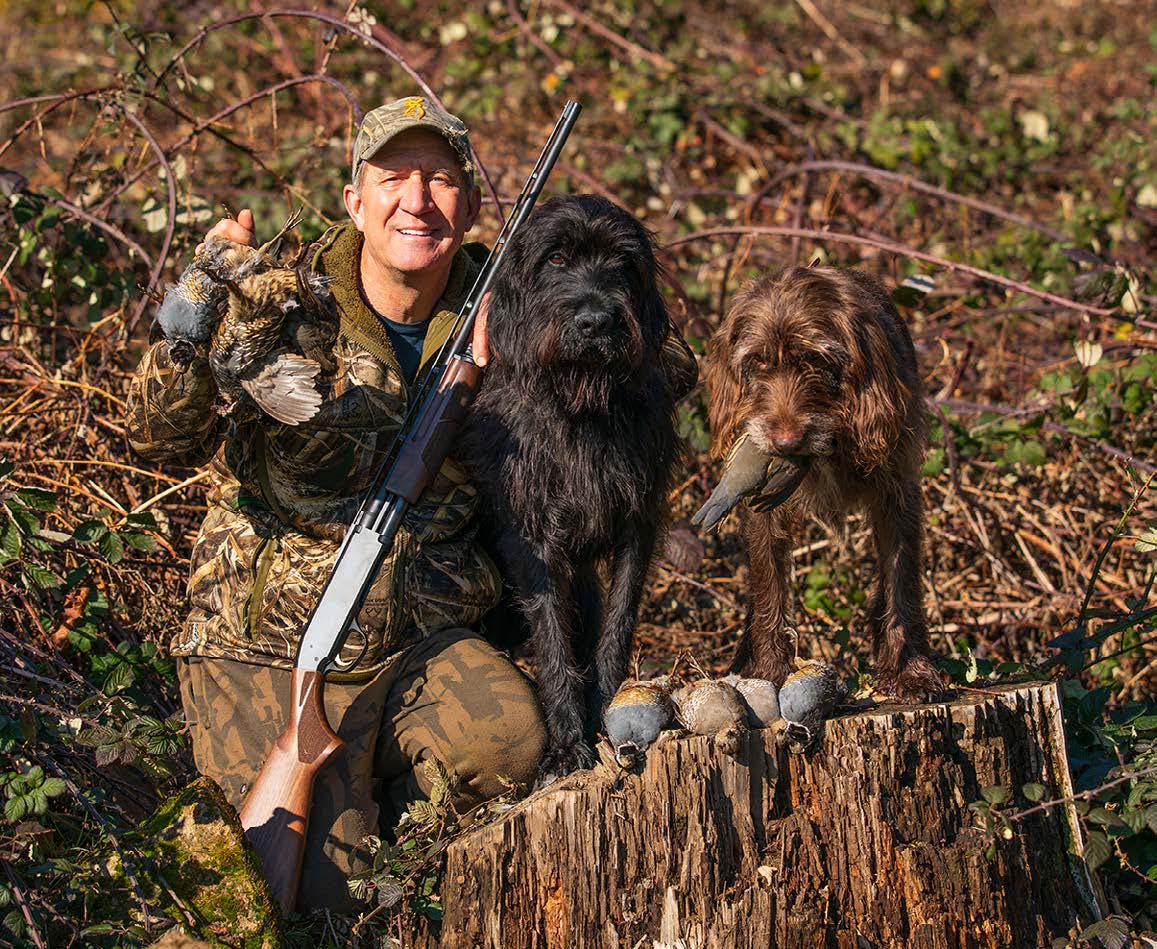
Another option is purchasing a private timber company access permit. Most of these, like those offered by Weyerhaeuser, offer year-round access. If you are serious about tagging all four upland species– especially blue grouse and mountain quail–it might be worth the investment to get one of these permits and hunt every day for a couple of weeks straight. Camping is allowed in many of these areas, making pitching a tent easy, economical, and an enjoyable way to see some breathtaking land.
If you’re an avid upland bird hunter seeking a bucket list species, or if you simply desire a unique hunting experience, consider heading to the Pacific Northwest. Once you see the stunning land these birds call home, you’ll gain a heightened appreciation for what it takes to successfully hunt them.
I was 150 yards from the covey of mountain quail when they busted me. Echo and Kona, my two pudelpointers, worked a gully between us, hidden from the birds’ view. Once the dogs gained elevation and caught wind of the quail, the hunt quickly escalated.
Both dogs worked together, then separated, ascending to a heaping pile of brush where the covey held. Echo, my female, went on point where I’d seen two quail. Kona, my male, worked around the backside of the giant debris pile.
I approached Echo, but no birds flushed. I called her off and we went around the pile, which towered more than 30 feet into the sky. Instantly, she joined Kona on rigid point.
As I shouldered the gun and began inching forward, three blue bombers shot out from the pile. I dropped the first bird in the middle of a tall patch of dead, brown fireweed, which Echo marked. I missed the second, but lucked out on the third, just as the bird sped into the fringe of a Douglas fir forest, which Kona was on.
It was a great hunt, adding to the blue and ruffed grouse we’d already collected in Oregon’s Cascade Range that morning. After a water break, we dropped in elevation, hoping to round out the day with some valley quail, but the bird that is usually the easiest of the four to find eluded us.
I grew up hunting the western slopes of the Cascades, a habitat that, along with the densely forested Coast Range, holds four prized upland bird species. Over the decades, I’ve taken all four species in a single day only a handful of times. Such an accomplishment often requires more luck than skill but knowing it could happen on any given day is what keeps a hunter going.
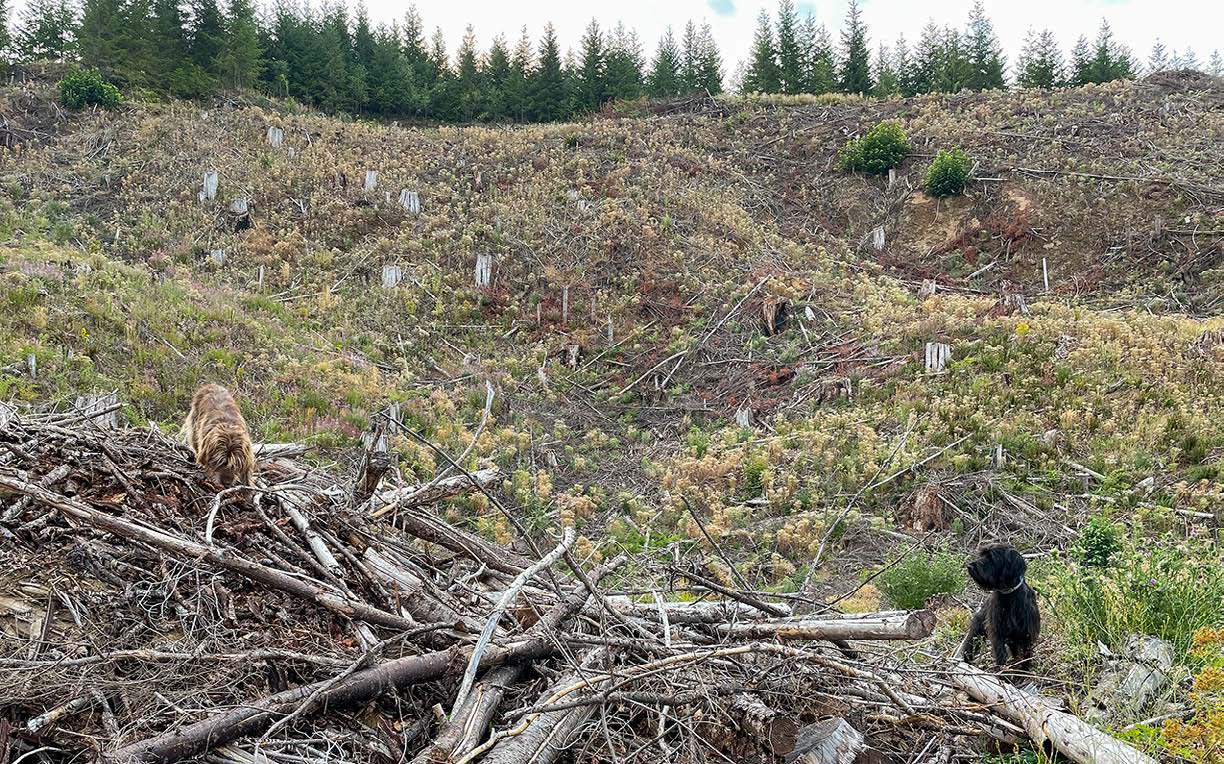
THE SEARCH
Both the Cascade Mountains and Coast Range run through Washington, Oregon and northern California. While blue and ruffed grouse, mountain and valley quail live in all three states, Oregon has solid populations of all four birds with a great deal of public land hunting opportunities.
Typically, you’ll find valley quail at lower elevations, ruffed grouse from creek bottoms to the high peaks, and mountain quail and blue grouse from mid- to high elevations. Don’t be surprised to find valley quail above 2,500 feet, especially if newly logged units provide food and cover. It’s not uncommon to find both quail subspecies in the same place, especially as winter approaches and mountain quail drop in elevation.
Ruffed grouse are largely homebody birds in both mountain ranges. They love lowland river and creek habitats, but also thrive in dense, 10- to 15-year-old stands of Douglas fir. Prime ruffed habitat consists of thick cover bordering semi-open terrain with a nearby creek. Riparian zones also hold good numbers of valley quail.
The strain of blue grouse occupying lands from the Cascades to the Coast are the sooty. The eastern parts of Oregon hold dusky blue grouse. Many sooty hunters begin the search at 2,500 feet. In recent years, however, I’ve been seeing more blues at lower elevations, and I have taken a number of birds between 500 and 750 feet in elevation. It’s not uncommon to take blues and ruffs on the same ridge.
“In western Oregon we’re finding sooty grouse prefer older stands of Douglas fir timber situated near clearcuts,” shares Kelly Walton, assistant game bird biologist for the Oregon Department of Fish and Wildlife. She shares, “We’re also finding a surprising number of sooty grouse occupying very rugged terrain that’s been disturbed by landslides, logging, even wildfires. Where a disturbance creates an opening in st eep country, and is near habitat that holds food, water and cover, we’re finding a good number of blues, but the big timber is key.”
Walton continues, explaining, “Early in the season, insects make up a large part of all the birds’ diets, so spend time in open areas where bugs thrive near favorable habitats grouse and quail feel safe in.” Interestingly, Walton has one year left in a three-year sooty study that could set the stage for all states that play home to these birds and are looking for ways to learn more about them. She notes, “Our spring hooting surveys the past two years are an extension of one that began 10 years ago, and what we’re finding through the use of recent acoustic recordings is very enlightening, and positive.” With another year to go in the study and loads of data to be analyzed, details aren’t ready for release.
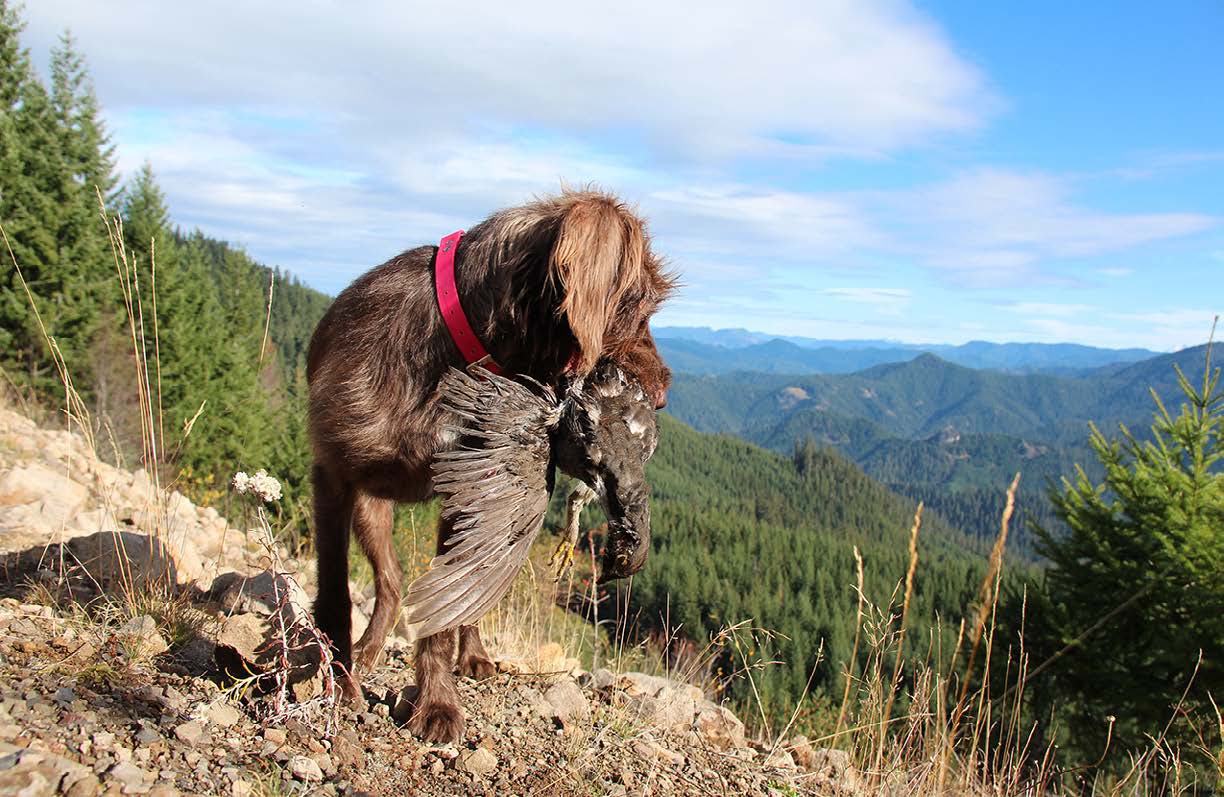
ON THE HUNT
Western Oregon’s grouse and quail season opens September 1. The first six weeks of the season are best when seeking all four species. Early in the season, insects, clover, grass, grass seeds and a mix of berries are food sources that congregate birds.
If seeking well-plumed birds to mount–especially mountain quail and sooty grouse–the middle of October marks the start of prime time. However, this is when the hunting gets tough, and you might be hard-pressed to even find a blue grouse after November 1. That’s when they are best, even though the season runs through the end of January. “The blue grouse are still out there, they’re just hard to find because they’re so spread out amid the forest,” Walton validates.
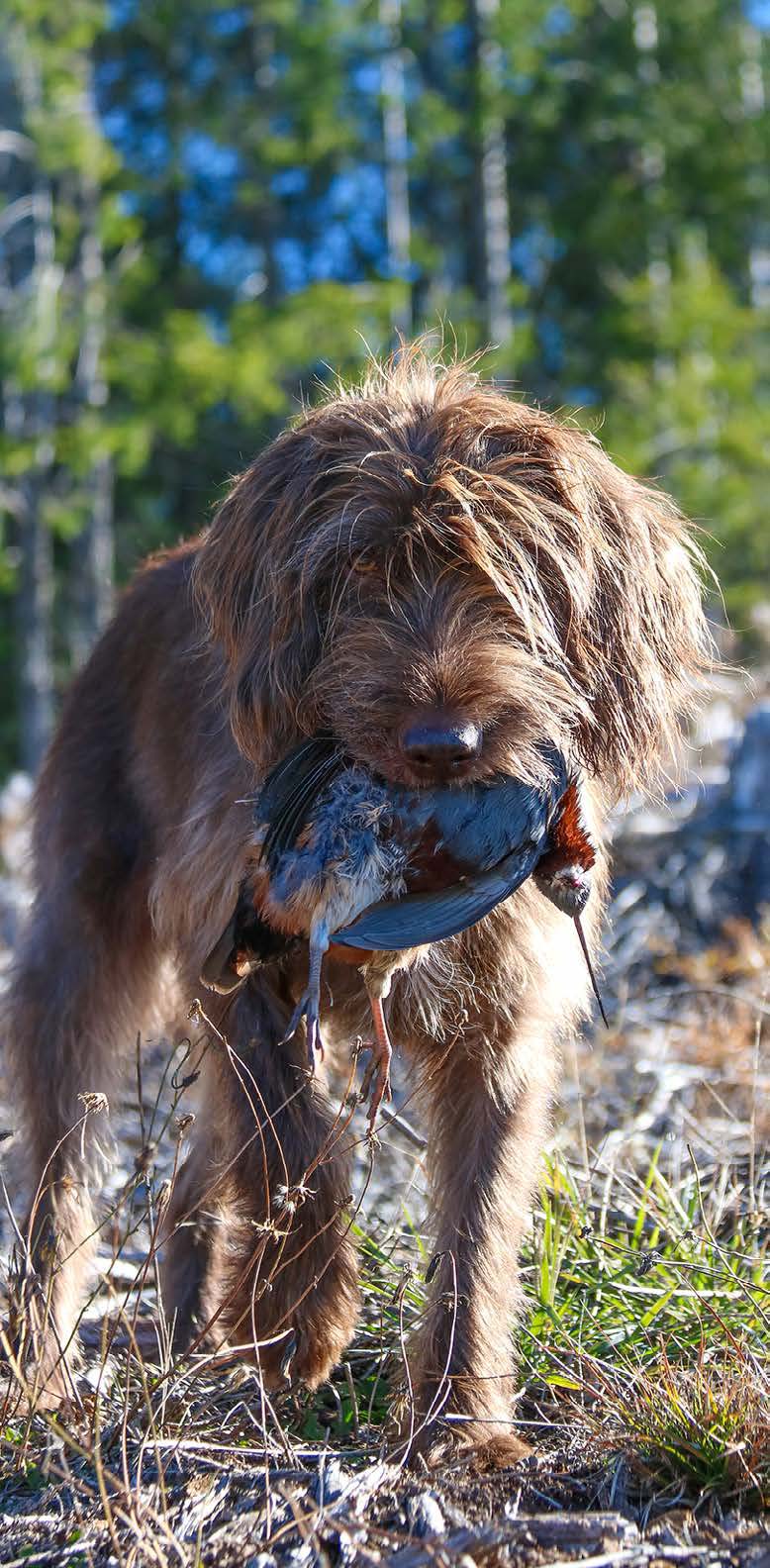
ABUNDANT BUT HARD TO FIND
Mountain quail are also abundant but hard to locate as the season progresses. It doesn’t take long for coveys of mountain quail to grow wise. Logged units, burns, brushy roadsides, and spur roads overgrown with tall, dry grass, are places to focus hunting efforts. “Mountain quail really love shrubs that come up right after a wildfire,” “So do valley quail,” Walton points out.
Most hunters drive roads in search of birds, then turn the dogs loose. The edges of logging roads are places all four species can be found in the morning and evening, when birds are gathering food as well as grit.
Gated roads that allow non-motorized access are some of my favorite habitats to hunt. I like riding a mountain bike and letting the dogs work ahead. This is big country, so don’t expect to go out and shoot all four birds in a day. It’s not uncommon to go a week or more without seeing a single mountain quail or blue grouse, although ruffs and valley quail are encountered much more frequently. With these birds, it’s all about covering ground and putting in time.
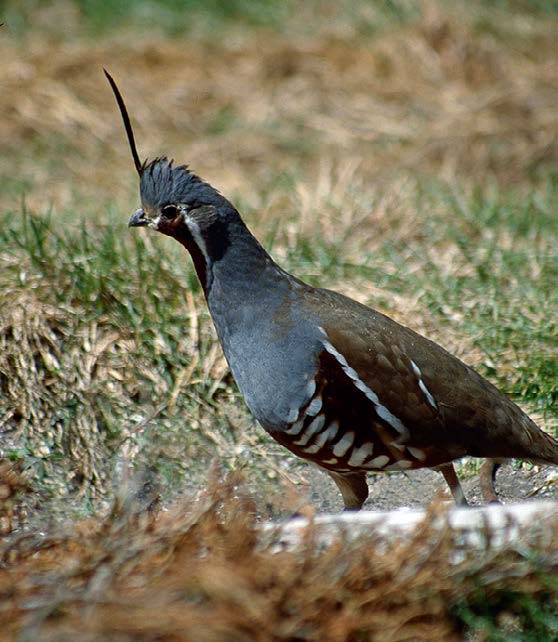
COVER CAT ROADS
If you’re fit to hike and your dogs can cover ground, focus efforts along old cat roads–rudimentary roads that were punched into the forest to access logging sites. If located near older stands of timber and logged units, these crude roads can hold all four species of birds.
Don’t waste time hiking up and down mountains (like how you’d hunt chukar), for you could spend weeks, even months, looking for birds. Instead, focus on hiking along the edge of ridgelines that have broken habitat— be it meadows, avalanches, burns or logging. “If you don’t see birds, it doesn’t mean they’re not there,” offers Walton. “In some areas, mornings are better than evenings, and vice versa.”
Ruffed grouse, valley quail and blue grouse hold very well for a dog. The only scent I’ve seen get a dog more wound-up than that of blue grouse is a turkey. Early in the season, blue grouse hang close together as they feed. These are big birds that leave a lot of scent. I started hunting early-season blue grouse with Kona when he was 12 weeks old, and he tracked and stuck points on these birds’ multiple times.
Catch a mountain quail in logged units with brush and slash piles they can escape to, and they’ll hold. Come upon them on dense forest fringes and you’ll be lucky to get a shot, let alone a look, even with good dogs.
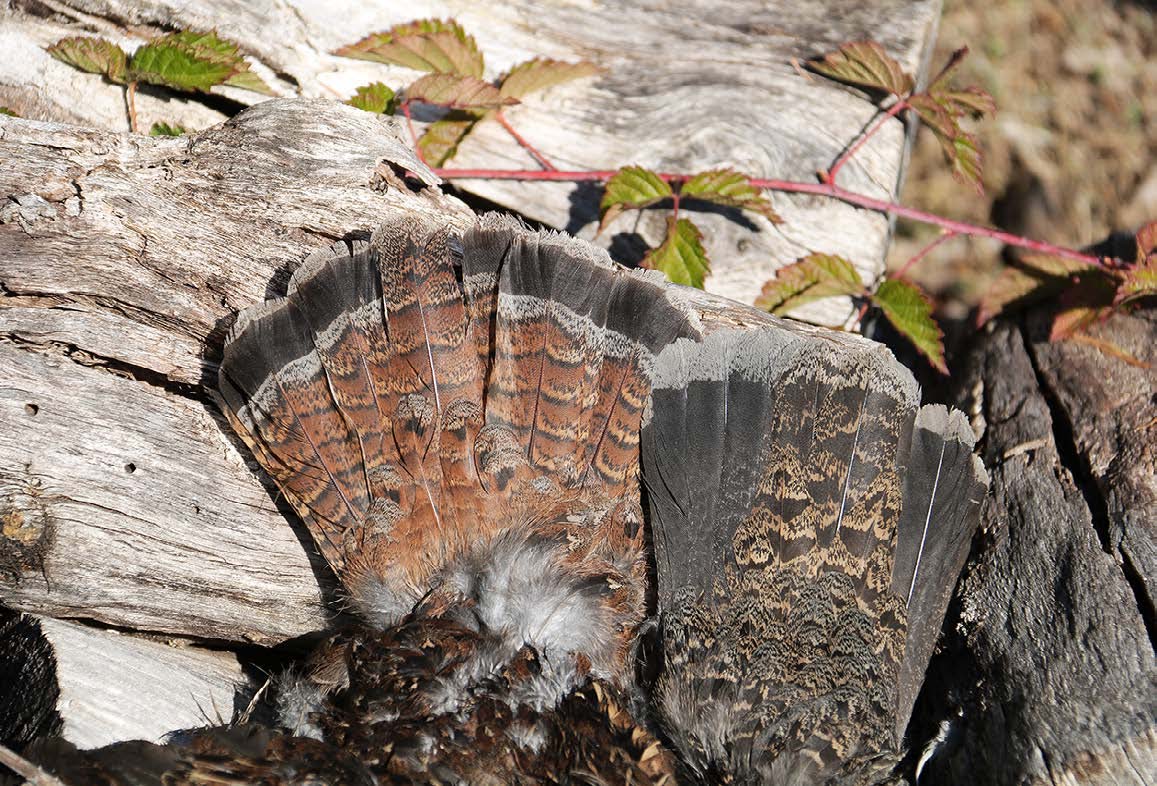
Note: For signed copies of Scott & Tiffany Haugen’s bestselling cookbook, Cooking Game Birds, visit scotthaugen.com
Per our affiliate disclosure, we may earn revenue from the products available on this page. To learn more about how we test gear, click here.






